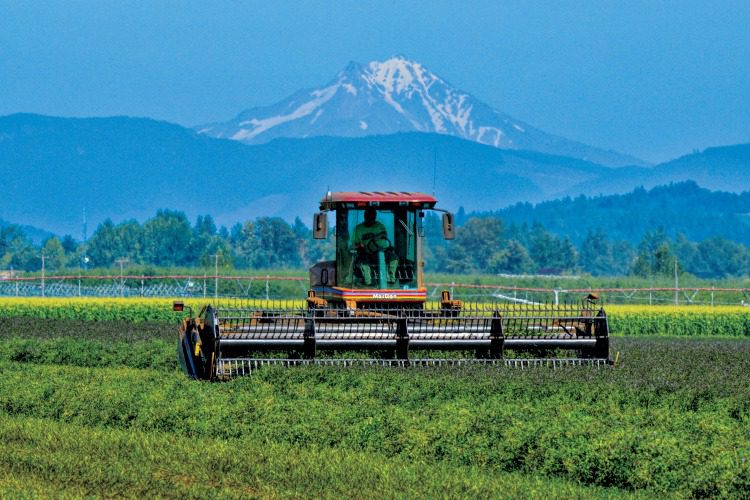Big changes are happening to the water supply in Central Oregon, where groups are improving the productivity and sustainability of irrigation canals. The typically arid region has received significant public funding for managing water for agriculture, including a recent boost from the new bipartisan federal infrastructure law. Led by the Central Oregon Irrigation District (COID), a municipal corporation, farmers across the region are using new technology to better their water distribution. Using methods such as hydropower, Central Oregon is creating extra livable land that has the potential for healthier crops and livestock.
The upgrades are designed to make the land more productive and sustainable. Traditional, aging canal systems suffer 30–70% water loss during transport and often have negative environmental runoff issues, affecting the soil and wildlife. The COID includes two main canals, the Pilot Butte Canal, which runs north, and the Central Oregon Canal, which snakes eastward. It diverts water from the Deschutes River to communities around Bend, Redmond, Alfalfa, Powell Butte, and Terrebonne. The canals provide agricultural and industrial water for a quarter of the more than 180,000 acres they reach.
While COID is focused on conservation, the organization also has a renewed concentration on improved water infrastructure to diversify the sources and build a more climate-resilient supply system.
To do so, the organization is also working on more legal options that allow regions to share water and new and larger pipe projects that help farmers save money and protect endangered species. It’s also looking for an improved point of delivery conservation and financial relief for farmers who endure drought.
COID is one of many groups in Central Oregon working on problem-solving irrigation water supply. Three Sisters and Energy Trust of Oregon are working on hydropower projects and helping improve the infrastructure of Native irrigation districts. By replacing irrigation canals with pipes, the land’s natural slope creates pressure via gravity that can power turbines and generate renewable electricity.
This conversation has already modernized 26 districts in the area, creating massive financial savings in electric costs, conserving water, and reducing the stress on groundwater supplies. Sometimes farmers and ranchers have enough pressure in the new pipes to build hydropower projects to help power their land.
Not only do the updates create clean energy, but they eliminate the dangerous chemical runoff from open ditches and canals. The Energy Trust also recently partnered with the nonprofit Farmers Conservation Alliance — “we work to keep the water flowing for farms, food, and fish” — to create fish display screens to prevent fish from being accidentally sent into farm water supplies.
Overall, the work to modernize Central Oregon’s aging irrigation canals is designed to help farmers be more productive and sustainability conscious. New hydropower methods show significant promise for renewable electricity, cost savings, and lessened environmental impact. In a state where the water belongs to everyone, Central Oregon is leading the way as a steward of this valuable natural resource.





